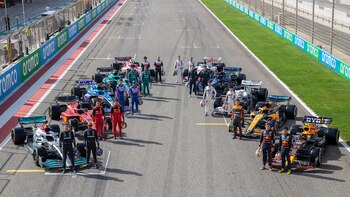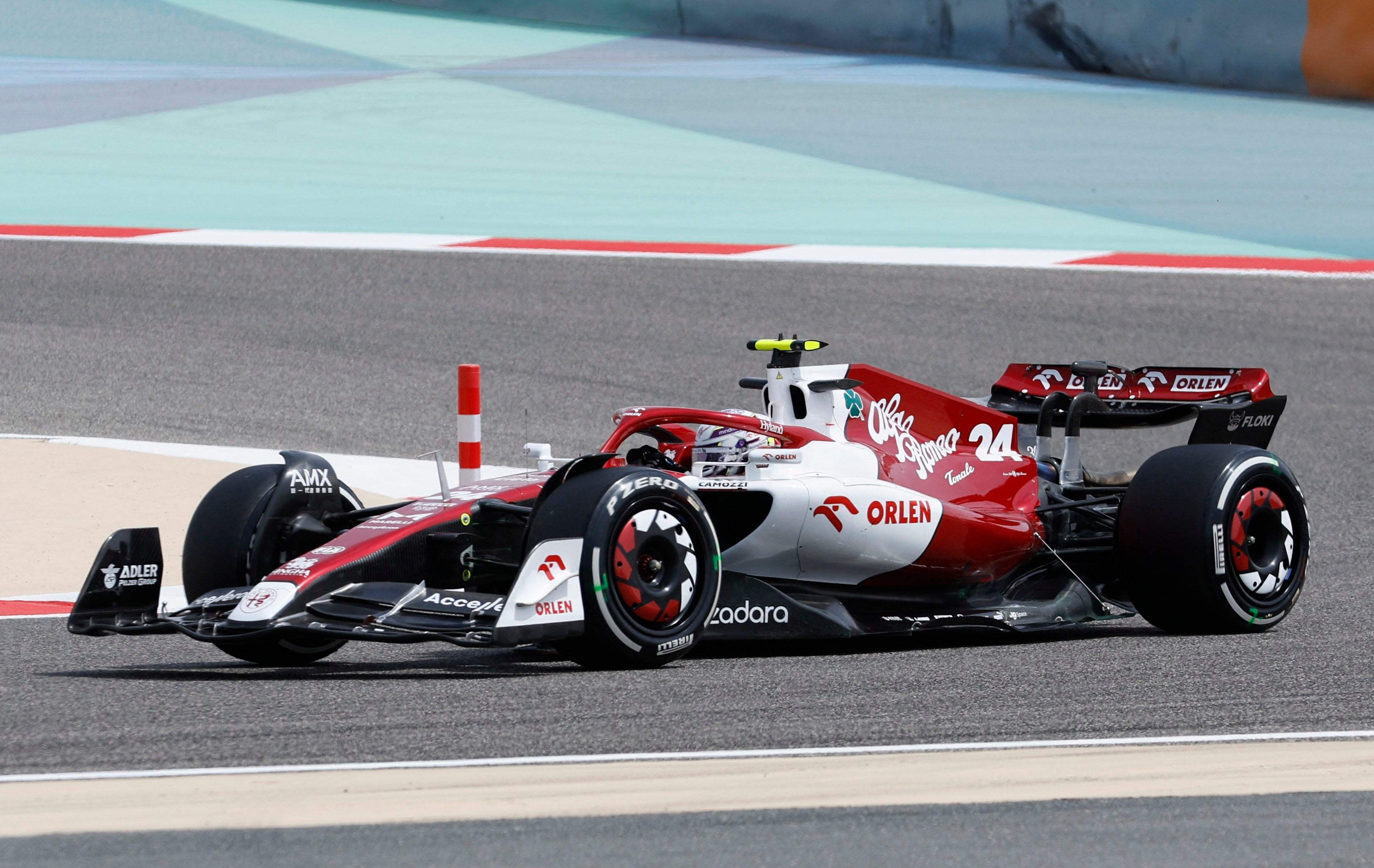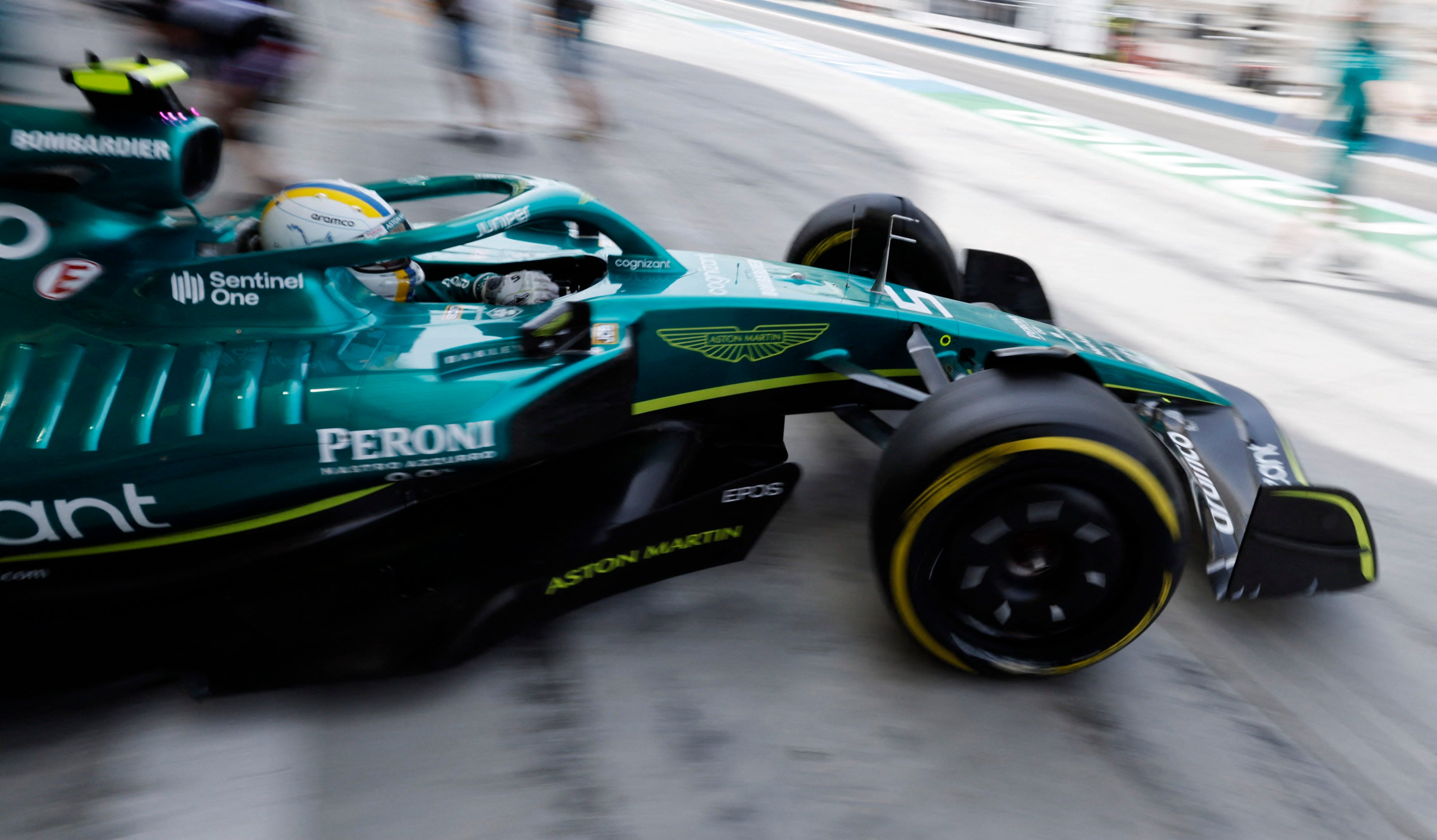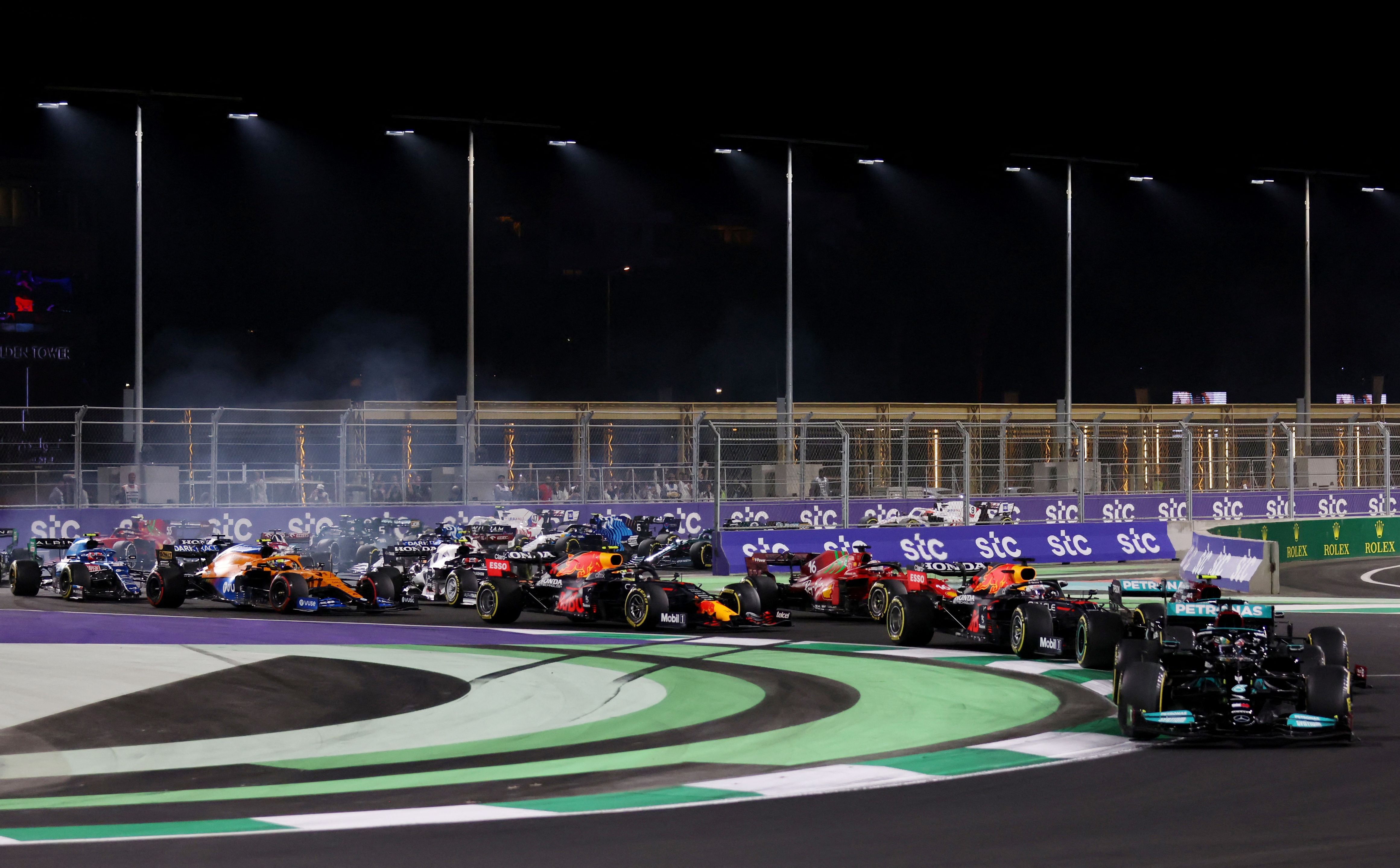
It was time for the truth for Formula 1 in 2022 and this Sunday is the opening of the championship in Bahrain, where the category debuts technical regulations with new cars that show a different aerodynamic concept. There are also developments in sports regulations that include changes for the laggards, the reason for conflict in the controversial definition like last year's one between Lewis Hamilton and Max Verstappen. In addition, the modifications to the team lineups and the longest schedule in history with 23 dates. All the details in this report.
Technical regulations. After 40 years, the “ground effect” returns, the system that allows cars to stick to the ground and achieve better traction in corners, more speed and that this contributes to overtaking on the track. The cars are cleaner without the attachments at the top and bottom and air penetration through the sides is achieved with the various solutions presented on the pontoons, which are the sectors that are on both sides of where the driver and engine are located.
While at the front the air flows under the monoposto, it passes through the point closest to the floor, making an area of extreme low pressure and generating a large amount of suction underneath. In this way, it does not rely solely on the air intake from the rear to produce the downforce.

However, this soil effect is not like the one it was between 1978 and 1982 since the current ones do not have the “polleritas”, which were the skirts under the pontoons that allowed better air intake underneath. It only has a range of fins underneath to reduce any turbulence. Although the remake of this system showed its flaws and since the air trail that passes underneath is so short, the rebound effect occurs in the cars on the straights, something that gave engineers headaches.
The front wing has been redefined and can now consist of up to four elements. The most important thing is that the endplates (they are the ends of the front wings) now look very different and have only a slight attachment. Its shape is turned upwards as if it were the wing of an airplane. The horn also attaches directly to the spoiler, just as cars looked in the early 1990s.

More overruns? This is the goal and for that in their previous simulation, the company that manages the category, Formula One Management (FOM) and the International Automobile Federation (FIA), took the reference that, when there are two cars, one in front of the other, the one behind now maintains about 86 percent of its downforce (grip on the floor) , compared to the 55 percent it was down until 2021. This means -in theory- that he is behind will arrive with better traction than the one in front and will have a better chance of overcoming.
DRS file. It is linked to the previous point. It is the Drag Reduction System or drag reduction system. It is an aerodynamic tool that facilitates better air intake when the rear wing moves and allows more speed. It will continue due to the problems with the ground effect that the cars presented with their rebounds.

New tires. A key issue that can completely change the strategies of pit stops. These are the 18-inch tires replacing the 13-inch ones that were used until 2021. This novelty is also key because it will generate less overheating of the rubber, greater grip on the track, and therefore better performance in cars, which will change the strategies of pit stops.
This year they are divided into the following compounds:
C1 are the hardest (white) and C2 are the hardest (white): they are the ones that have the least degradation on the track, but they are the ones that take the longest to have grip (or grip) on the asphalt and therefore the fastest. Depending on their versions, each team will know how to use them.
Medium C3 (yellow): being between the hard and soft, they are the ones that allow the greatest variants of strategy.
Soft C4 (red) and the 5 ultra soft (red): they are the ones with the best grip on the track, but also the ones that degrade the most and are the ones that most require a driver's administration.
For wet floors: green is an intermediate and blue for full rainy conditions.

Budget limits. For this season, the ceiling is 142 million dollars for each team, although those numbers do not include the salaries of the drivers or the main engineers.
Sports regulations.
The score of the races. It remains the same with 25 points for the winner and the following scales for the rest: 2nd (18), 3rd (15), 4th (10), 5th (8), 6th (6), 7th (5), 7th (5), 8th (3), 9th (2) and 10th (1). Lap record: 1 point.
Sprint racing. Saturday's short races will continue and will be at Grand Prix in Emilia Romagna (Italy), Austria and Brazil. Now the top eight will earn points: 1st (8), 2nd (7), 3rd (6), 4th (5), 5th (4), 6th (3), 7th (2) and 8th (1).

Races that need to be finished sooner. In order to avoid the role of Belgium 2021, in which only one lap was taken with a safety car in torrential rain, races will now have to last a minimum of two laps under green flag conditions (speed thrown) before points are awarded. For races that stop between 50 and 75 percent of the course, the score for fourth place changed from 9 to 10 points, and the score for seventh place, from 5 to 4 points. The full assignment is now 19-14-12-10-8-6-4-3-2-1.
Stragglers in neutralization. With the safety car on the track, all lagging cars, which have lost a lap or more, will be able to overcome the leader to try to recover a lap. Until the definition of Abu Dhabi, any (authorized) lagging car could overcome the leader as long as the safety car was on the track. But at the close of last year in Abu Dhabi, the former Race Director, Michael Masi, allowed only the cars located between the pointer, Hamilton, and the second Verstappen, not those behind him and Carlos Sainz. The Dutchman, who had new tires with better grip, beat the Englishman, won the race and the championship.

New Career Directors. After Masi's departure from office, Niels Wittich, former Race Director of the DTM (German Tourism Championship), and Eduardo Freitas, Race Director of the WEC (Endurance World Cup), will now act alternately as F1 Race Director. Herbie Blash will attend as permanent senior advisor and will return to F1 five seasons after leaving the position of deputy race director, when the remembered Charlie Whiting was as Race Director.
The VAR of F1. Virtual Race Control Room. Like the video assistance referee (VAR) in football, he will be placed in one of the FIA offices as a backup off the circuit. In real time connection with the Race Director.
No radio with the DC. In another important development, teams will no longer be able to communicate with the Race Director, a blow to the heads of Red Bull and Mercedes, Christian Horner and Toto Wolff, for example. It should be recalled that in the definition of the title a member of Red Bull spoke to Masi and asked him to place Verstappen behind Hamilton, something that the Australian agreed to...

The teams, drivers, cars and engines.
Mercedes: Lewis Hamilton #44 - George Russell #63. The W13 has an almost non-existent concept of pontoons and is the most eloquent in the use of overhead radiators. Hamilton will have a tough internal rival with Russell's entry.
Red Bull: Max Verstappen #1 - Sergio Perez #11. The RB18 stands out for a large cut below its pontoons and that is the drastic alternative for better airflow. Honda confirmed that it will continue to supply its engines until 2025. Verstappen was the fastest in the Bahrain tests. He will seek to retain the title and Checo Pérez can achieve more victories.
Ferrari: Charles Leclerc #16 - Carlos Sainz #55. The F1-75 showed a better engine than its predecessor. It is also distinguished by the undulation in its pontoons and pointed trunk. Typhosis, in principle, have something to be excited about.
McLaren: Lando Norris #4 - Daniel Ricciardo #3. The Mercedes-powered MCL36 was under the spotlight by the FIA in the first tests due to its ground effect, doubts that could not be corroborated in the official tests in Bahrain.
Alpine: Fernando Alonso #14 - Esteban Ocon #30. In 2021 they were winners with Ocon in Hungary and this year Alonso is going for his own. The A522 is the mechanical means that in the second tests showed its potential with the Renault engine.
Alpha Tauri: Pierre Gasly #10 - Yuki Tsunoda #22. The Red Bull satellite team will compete with the AT03 and will seek to complete the top five in the Constructors' World Championship. The continuity of Honda's irons generates a good expectation.
Williams: Nicholas Latifi #6 - Alexander Albon #23. He joined Albon who returned after a year of absence. The historic Grove team will try to improve with the FW44 with the Mercedes engine to get out of the last three places.
Aston Martin: Sebastian Vettel #5 - Lance Stroll #18. He changed his main sponsor and an improvement is expected this season. With Vettel as the flag, the goal will be to achieve podiums with the AMR22, his model for this year that will continue with Mercedes boosters.
Alfa Romeo: Valtteri Bottas #77 - Guanyu Zhou #24. He renewed his team of drivers. There are no longer Kimi Räikkönen and Antonio Giovinazzi, who were replaced by Valtteri Bottas and Guanyu Zhou, the first Chinese to race in F1. His car will be the Ferrari powered C42.
Haas: Mick Schumacher #44 - Kevin Magnussen #20. It is in the midst of a huge financial crisis following the departure of the Mazepin capitals, due to Russia's invasion of Ukraine. Its north will be, precisely, to reach the goal of 2022. The car is the VF-22 with Ferrari engine.

Calendar. It is the longest in history with 23 dates. Australia, Canada, Singapore and Japan return after being left out of the last two years due to travel restrictions linked to the COVID-19 pandemic. In addition, the first Miami Grand Prix will be held in early May, on a 5.41-kilometer urban circuit. With this, the United States will have two dates as it joins that of Austin.
Grand Prix Date Headquarters
March 20 Bahraini GP Sakhir
March 27 Saudi Arabian GP Jeddah
April 10 Australian GP Albert Park Melbourne
April 24 Emilia-Romagna GP Imola
May 8 Miami GP Miami International Autodrome
May 22 GP of Spain Montmeló (Barcelona)
May 29 Monaco GP Monte Carlo
June 12 Azerbaijani GP Baku
June 19 Canadian GP Montreal
July 3rd British GP Silverstone
July 10 Austrian GP Red Bull Ring (Spielberg)
July 24 French GP Paul Ricard
July 31 Hungarian GP Hungaroring
August 28 Belgian GP Spa-Francorchamps
September 4 Netherlands GP Zandvoort
September 11 Italian GP Monza
September 25 Race to be announced (Russian GP canceled) To be confirmed
October 2 Singapore GP Marina Bay
October 9 Japanese GP Suzuka
October 23 US GP Circuit of the Americas (Austin)
October 30 Mexico City GP Hermanos Rodríguez
13 November GP of San Pablo Interlagos
20 November Abu Dhabi GP Yas Marina
KEEP READING
Últimas Noticias
Debanhi Escobar: they secured the motel where she was found lifeless in a cistern
Members of the Specialized Prosecutor's Office in Nuevo León secured the Nueva Castilla Motel as part of the investigations into the case

The oldest person in the world died at the age of 119
Kane Tanaka lived in Japan. She was born six months earlier than George Orwell, the same year that the Wright brothers first flew, and Marie Curie became the first woman to win a Nobel Prize

Macabre find in CDMX: they left a body bagged and tied in a taxi
The body was left in the back seats of the car. It was covered with black bags and tied with industrial tape
The eagles of America will face Manchester City in a duel of legends. Here are the details
The top Mexican football champion will play a match with Pep Guardiola's squad in the Lone Star Cup

Why is it good to bring dogs out to know the world when they are puppies
A so-called protection against the spread of diseases threatens the integral development of dogs




